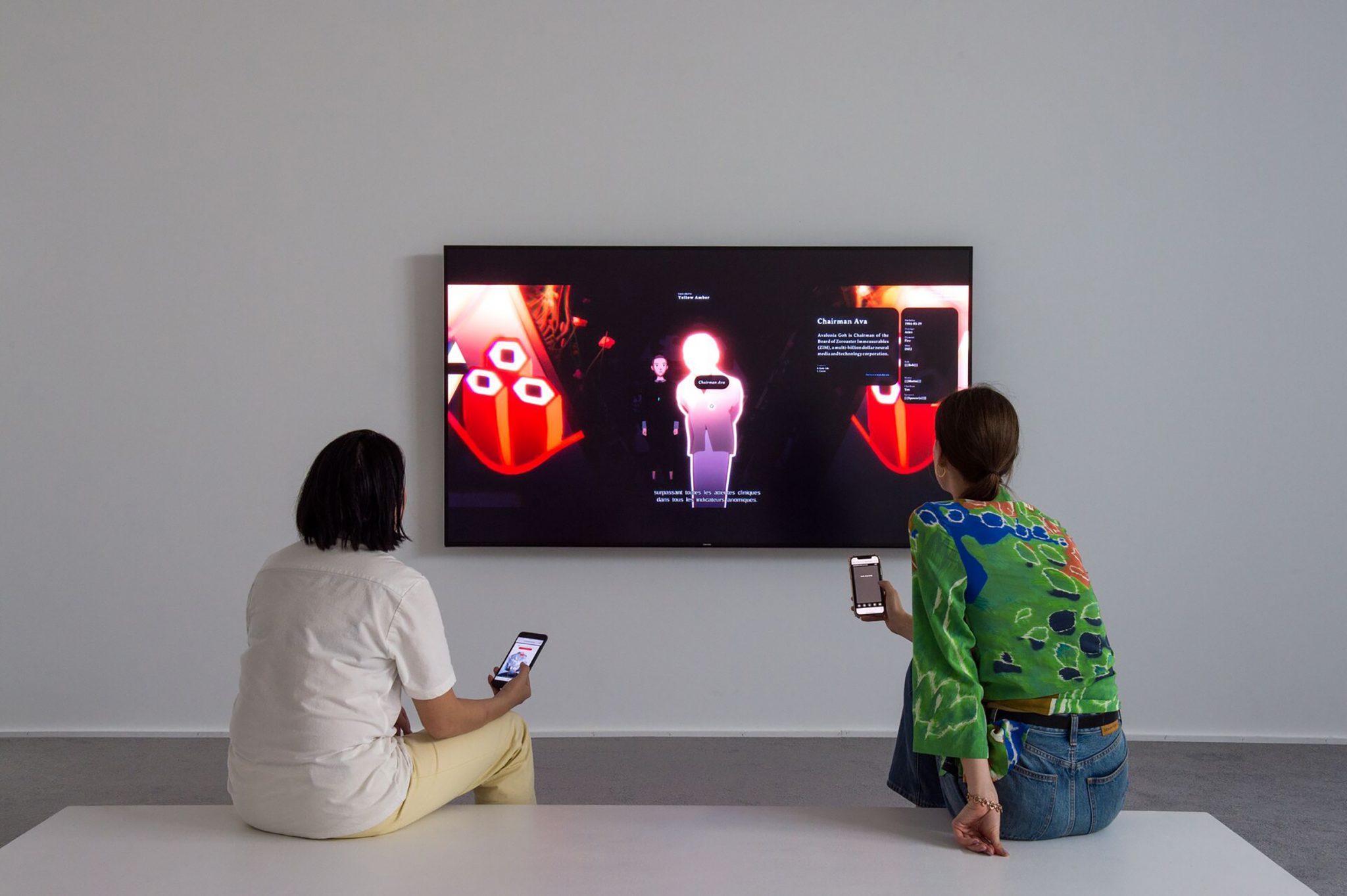It’s possible to see much contemporary culture as a kind of last-minute taking stock: tinkering with the aesthetics of the past, shining them up, temporising at best and wheel-spinning at worst in the face of onrushing technological change
I used to tell myself that if I lost touch with contemporary art, I could listen to new music and still get some broad, applicable idea of how culture was changing, trends and impulses in the visual field typically showing up in the sonic. That doesn’t seem so true anymore: thanks to algorithmic playlists and the increased push towards always-on background sounds (lo-fi beats to study to, etc), music nowadays matters less, reducing to ‘vibe’ – for which musicians in turn are catering – and increasingly amorphous as genres meld into the so-called monogenre. For orientation purposes concerning new art, I’d probably be better off getting into gaming. (The proposal that art is increasingly turning into vibe is a subject for another time.)
But there are always cases where art and music continue to converge: particularly, now, around technology. Two years ago, the Berlin-based, American musician Holly Herndon put out Proto (2019), which resembled her previous albums (ankle-snapping beats, glitched electronics, pummelling bass, ethereal vocals) except that it was explicitly a collaboration with homebrewed artificial intelligence. Here Herndon, who has presented her work in art institutions and collaborated with artists including Trevor Paglen, and her (musical) collaborator Mat Dryhurst built an AI called Spawn in a modified gaming computer and taught ‘her’ (the makers say) to sing using samples of Herndon’s own voice and the instruction of other vocalists. In a couple of intervals on the record subtitled ‘live training’, we eavesdrop on the AI recognising and interpreting sounds; some of Spawn’s training was approximately spiritual, since Herndon called back to the collective gospel singing she’d participated in while growing up in Tennessee. Spawn gurgles, sings anti-intuitive things, nestles contextual emotion into circuitry, and advertises itself, as much AI does not, as the transparent product of countless human decisions.
I’ve seen other musicians collaborate nascently with AIs, such as a gig by the British musician Actress and his digital ‘sprite’ and cocomposer Young Paint, in which it was impossible to tell who was doing what (reader, I fell asleep). There is a degree of techno-optimism built into such projects; in Herndon’s case, seeking to write, into artificial intelligence, a taste for what humans would consider beautiful and have evolved over centuries – choral harmony – and perhaps even some kind of spirituality. It’s a reminder, beyond splashy but embryonic proposals like Ai-Da, that one marker of burgeoning creative practice is the sincere attempt to instil AIs with humanist values. An exhibition in San Francisco’s de Young Museum last year, for example, featured among other works Martine Syms’ Mythiccbeing (2018), a digital avatar programmed with nuanced thoughts on Blackness, queerness and gender relations, and Stephanie Dinkins’ videos Conversations with Bina48 (2018–) in which a ‘social robot’ created with no understanding of race, gender or class is slowly enlightened through ongoing conversations with the artist. There are parallels here to the importance of ethics in the programming of self-driving cars, in terms of them deciding who to sacrifice in the case of an accident; humanity trying to get as much of itself as possible into the next iteration of the species.
Then of course there’s primarily generative art, aka John Cage with a laptop, if your taste runs to never seeing or hearing the same thing twice, at the whims of the algorithm, or if as an artist you’re interested in outrunning your own predispositions: see, for example, the musician Arca’s algorithmic-music collaborations with Philippe Parreno, or Ian Cheng’s use of AI to build screen-based digital lifeforms that evolve in real time. And yet, and relatedly – sweeping generalisation ahead – there’s a great deal of cultural production that pointedly ignores all these developments. It’s possible, in a jaundiced manner, to see much contemporary culture as a kind of last-minute taking stock: tinkering with the aesthetics of the past, shining them up, temporising at best and wheel-spinning at worst in the face of onrushing technological change that threatens – or, if you’re reading in Silicon Valley, promises – to displace us and the entire humanist, human-centric project. We can, conceivably, predispose nascent inhuman intelligences towards artistic creativity, though we might expect that they will later do unexpected things with it, divorced from pre-existing critical criteria or legibility. Artists and musicians who don’t want that – who, with reason, are anxious about it – keep relentlessly winding back the cultural clock two decades.
There’s enough delusion to go around. A few years ago, at a party, a stranger asked me what I did, and when I told him he said ‘well, your job’s on the chopping block,’ before confidently mentioning that he, on the other hand, sold tableware. True, I won’t be a decent judge of wholly algorithmic art, though happily I suspect there are already some robot critics writing for art magazines. Prior to all this, though, and me retraining as whatever’s left for people to do, there’s this interregnum of hopeful, latently nervous collaboration, which will warp art into unforeseen and alien shapes, and constitutes one way out of the larger, widespread stylistic impasse (another being the meatspace/virtual space interface of the much-vaunted metaverse). After that, there may be art but we quite possibly won’t understand it, or be there to see it. Then again, assuming AIs don’t need emotions, you wouldn’t necessarily bank against a longterm future for Conceptualism.
